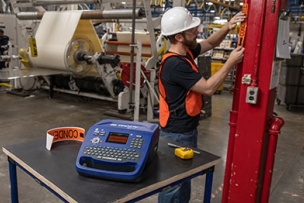Restart, Reopen, Recover
No matter what “phase” your return-to-work situation is in, there are several key factors to be addressed and implemented to ensure the highest level of success for both your employees' safety and your business’ success.
To achieve a stable restart, companies need to focus on the following seven elements:
Ensure employee wellbeing
Conduct a short survey to understand the perception of your workforce’s readiness to restart – are they both physically healthy, free from virus-related symptoms, and mentally healthy, as many employees may be experiencing anxiety around coming back to work after a prolonged quarantine period.
Establish an agile governance system
Set up a recovery committee to create your restart plan and priorities. Be sure to include critical restart activities, including dependencies, sequenced in a way to best accelerate recovery. Perform a quick review of your operations to understand how the pandemic has affected key points of operation.
Conduct risk assessment and planning
Do not just focus on COVID-19 related risks, but rather look at all risks, as the inherent risks in your organization have not disappeared just because of the pandemic. Everything from personnel to logistics may be different from pre-quarantine, so be prepared to assess risk as you see fit.
Secure adequate resourcing
As you initiate operations and workers return to the worksite, plan on having to resort to several immediate response measures to avoid further health risks due to the pandemic. Back-up workers and/or altered processes will need to be utilized in case of sickness, delayed shipments and more.
Determine supply chain reliability
Depending on your industry, uncertainty around customer demand, local and international production and shipping regulations could have a large effect on your overall supply chain, greatly impacting your ability to reopen. Confirm what you need to restart operations is, and will continue to be available.
Assess operational readiness
Make certain your reopen plan covers all key priorities for your specific business, including workforce and supply chain readiness, facility signage and reorganization if needed, customer demand levels and more, to restore your organization to pre-disruption performance levels, despite the uncertainties.
Ensure prompt and open communication
Be prepared to act nimbly in adjusting and reassessing as you move forward due to constantly evolving regulations and expectations. It is important to communicate both internally and externally on what has or will be done to address employee and customer health and safety.
Changing behavior to meet the “new normal”
Regardless of industry, new norms in culture and behavior need to be universally implemented.
- Create a safe and sanitized environment upon resuming services and operations
- Effectively establish and manage clear messaging and processes concerning critical behavior that will reduce the spread of COVID-19
- Implement high-performing and durable visuals, like signs, labels and floor tape that are critical elements to successful change management
Change management is the process, tools and techniques to manage the people side of change to achieve the required business (health) outcome. Change management incorporates the organizational tools that can be used to help individuals make successful personal transitions resulting in the adoption and realization of change.
New norms in culture:
- Less hand shaking
- More distance from your co-workers (social and workplace distancing)
- The real prospect co-workers and/or family sickness from the virus
New norms in behavior:
- Universal commitment to hand washing and sanitation
- Regular use of face masks
- Staying home if sick/self-monitoring possible symptoms
As we move forward in our local and business-specific phases of reopen and recover, there will be an expectation for all business to balance things in ways they haven’t had to before, including:







Talk to Us!
Leave a reply
Your email address will not be published. Required fields are marked *